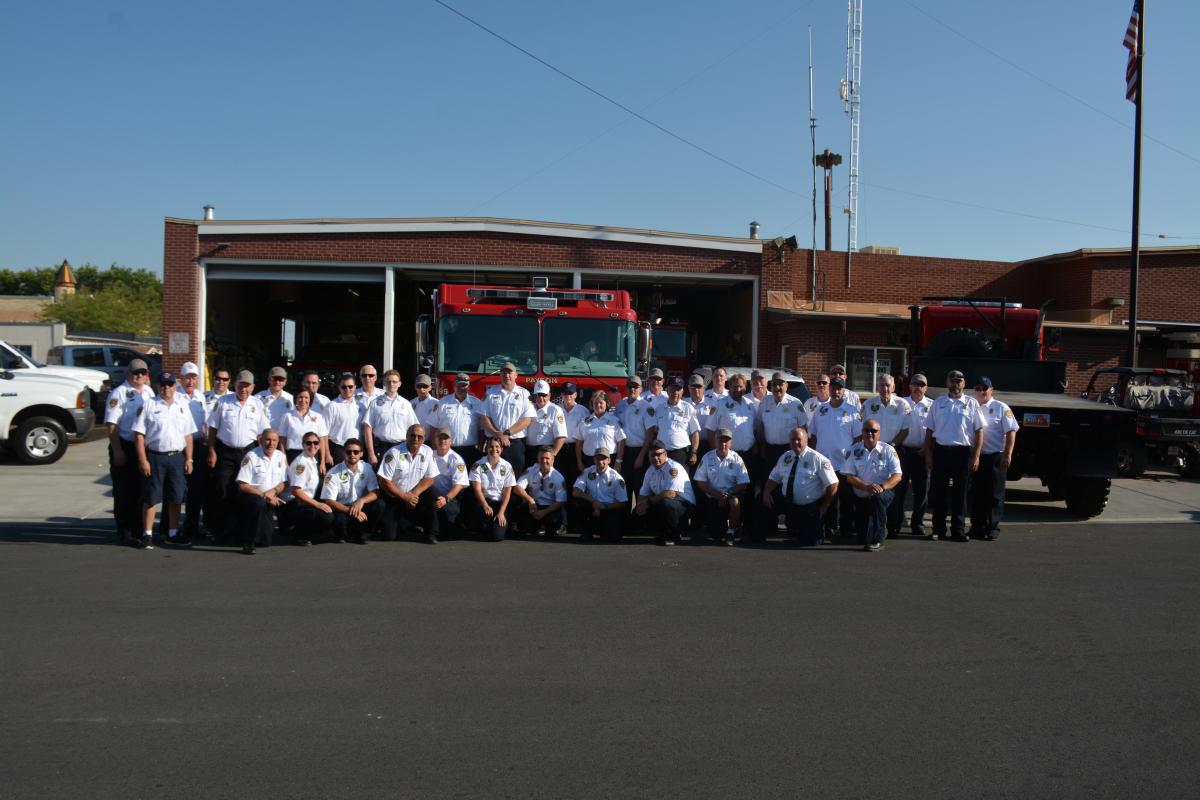About Payson Fire & Rescue

Organizational Background
Disastrous fires in 1890, 91 and 92, swept through down town shops destroying them. Something had to be done. Payson’s first volunteer fire department was organized in June of 1892 with David E. Sargent as Fire Chief. Water lines had been laid sometime previous to 1892 as a hose cart was purchased that same year to fight the blazes. The hose was hooked up to fire hydrants at the fire scene.
Rules of the 1892 department were: (1) The department shall have twenty men. (2) Each man shall be furnished with one hat, one red flannel shirt, and one belt. (3) The department shall be furnished with a pick ax, a speaking trumpet and two lanterns. (4) Each fire fighter shall be allowed 50 cents per hour when on duty at fires and when called out by authority of the city council.
There were many calls for medical help, but the ambulance concept was still new. The Fire Department and the Police Reserves were helping people with what little training they had. They Fire Department responded with their 1962 Ford Falcon (which is still in use) Resuscitator Van and the Police Reserves 1952 GMC.
The Payson Ambulance Association started in 1973 with the first recruits graduating as Emergency Medical Technicians (EMT’s) March 24, 1974. They were helped with supplies from the Payson Hospital. The first ambulance beside the mortician vehicle was a 1958 Pontiac. It was a disaster itself, but it was used on emergency calls and transports.
Growth Now
Medical and fire calls continually increase every year. In 1977 the fire department increased its employees by 1/3 from 20 to 30 firefighters. The call volume in 1977 was below 50 fire calls and 67 medical runs. Every year the calls steadily increased with no increase in manpower. Payson Fire responded to over 372 fire calls and 1530 medical calls in 2014.
Level of Service & Programs Provided
The departments offers full administrative services including plan reviews, fire inspections, investigations, code enforcement, public education, vehicle and building maintenance, medical and fire response, emergency preparedness, hazardous materials, cause and origin of fires, CERT, Juvenile Fire Setter Program and assist with public events.
All firefighters are certified and tested under the Utah Fire & Rescue Academy (UFRA) certification programs. Our firefighters are certified to a minimum level of firefighter II and Hazardous Materials Operations. Two-Thirds of our firefighters are also certified in wildland firefighting. Emergency Medical Technicians (EMT’s) are certified with Utah Department of Health and must recertify every four years. EMT’s are certified to the Paramedic, Advanced (EMT-A) level with some still at the basic level (EMT-B). We provide Paramedic level of service to our community.
Volunteers face increased demands from the fire & ambulance departments. Stemming from the increase in emergency response calls, the need for ongoing training, recertification’s, and the increasing need to undertake specialized training to improve medical care and fire ground activities.
Demands on the volunteer’s time are also increasing away from the fire and ambulance departments as families struggle to balance the career and family obligations of today’s two-income families. This increases the need to start hiring fulltime firefighter / EMT’s, especially when people can get a job that pays a lot more. Businesses are more reluctant to let their employees go.
Current Buildings:
The current Fire Station (Station 91) was built in 1958 with 3 bays, a meeting room, and bathrooms. In 1985 it was added onto with 3 full drive-through bays to the east. In 2002 the last addition was added to the northwest section of the building. This provided room for storage of supplies and equipment.
The current ambulance station (Station 92) was built in 1977 and served as a combined Police and Ambulance station until 2005, when the Police Station moved the City Center. The station was in such poor condition that the Police had to move out. In 2008 the outside of the Ambulance Station was updated with new exterior. The floor in the northeast corner of the building had sunk and was up. The interior of the building has been updated in 2020 with sleeping quarters and a day room.
